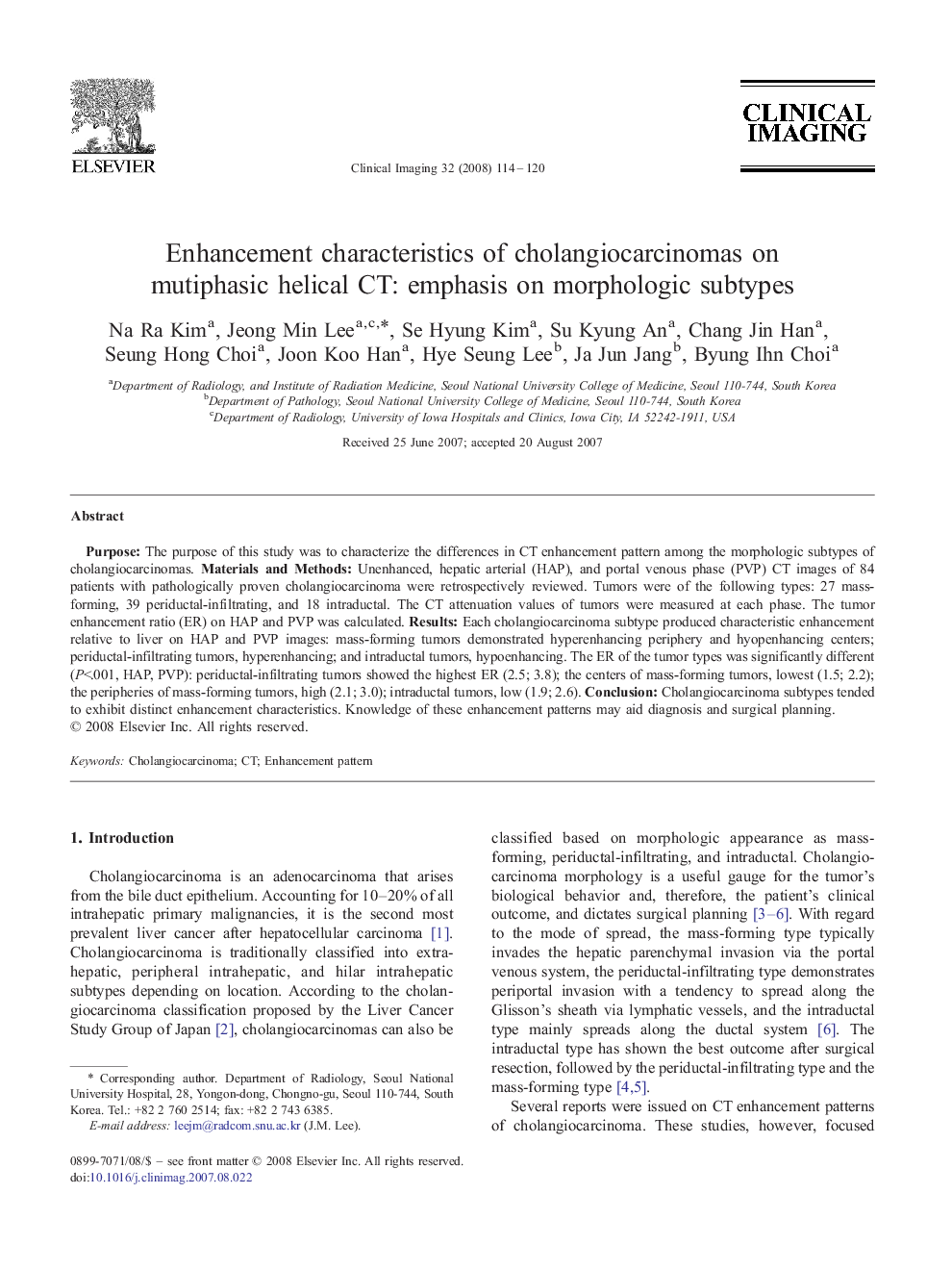| Article ID | Journal | Published Year | Pages | File Type |
|---|---|---|---|---|
| 4222527 | Clinical Imaging | 2008 | 7 Pages |
PurposeThe purpose of this study was to characterize the differences in CT enhancement pattern among the morphologic subtypes of cholangiocarcinomas.Materials and MethodsUnenhanced, hepatic arterial (HAP), and portal venous phase (PVP) CT images of 84 patients with pathologically proven cholangiocarcinoma were retrospectively reviewed. Tumors were of the following types: 27 mass-forming, 39 periductal-infiltrating, and 18 intraductal. The CT attenuation values of tumors were measured at each phase. The tumor enhancement ratio (ER) on HAP and PVP was calculated.ResultsEach cholangiocarcinoma subtype produced characteristic enhancement relative to liver on HAP and PVP images: mass-forming tumors demonstrated hyperenhancing periphery and hyopenhancing centers; periductal-infiltrating tumors, hyperenhancing; and intraductal tumors, hypoenhancing. The ER of the tumor types was significantly different (P<.001, HAP, PVP): periductal-infiltrating tumors showed the highest ER (2.5; 3.8); the centers of mass-forming tumors, lowest (1.5; 2.2); the peripheries of mass-forming tumors, high (2.1; 3.0); intraductal tumors, low (1.9; 2.6).ConclusionCholangiocarcinoma subtypes tended to exhibit distinct enhancement characteristics. Knowledge of these enhancement patterns may aid diagnosis and surgical planning.
